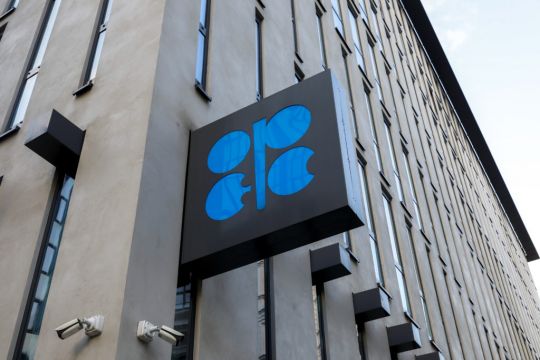The Opec+ alliance of oil-exporting countries has decided to sharply cut production to support sagging oil prices.
Energy ministers meeting at the Vienna headquarters of the Opec oil cartel cut production by a larger-than-expected two million barrels per day starting in November after gathering for their first face-to-face meeting since the start of the Covid-19 pandemic.
The group said the decision was based on the “uncertainty that surrounds the global economic and oil market outlooks”.
The 45th Meeting of the Joint Ministerial Monitoring Committee and the 33rd OPEC and Non-OPEC Ministerial Meeting took place in person at the OPEC Secretariat in Vienna, Austria, on Wednesday, 5 October 2022.
Read Press Release👉 https://t.co/Bu3HMDi3In— OPEC (@OPECSecretariat) October 5, 2022
Advertisement
Saudi Energy Minister Abdulaziz bin Salman stressed the cartel’s stated role as a guardian of stable energy markets.
“We are here to stay as a moderating force, to bring about stability,” he told reporters.
Besides a token trim last month, the major cut in the amount of crude that Opec+ ships to the world is an abrupt turnaround from months of restoring deep cuts made in 2020 during the depths of the pandemic.
As demand rebounded, global energy prices have swung wildly since Russia invaded Ukraine, fuelling inflation that is squeezing economies around the world.
The decision comes as oil trades well below its summer peaks because of fears that major global economies such as the US or Europe will sink into recession due to high inflation, rising interest rates meant to curb rising consumer prices, and uncertainty over Russia’s war in Ukraine.
“We are going through a period of diverse uncertainties, which could come our way, it’s a brewing cloud,” Mr bin Salman said, adding that Opec+ sought to remain “ahead of the curve”.
Oil prices surged this summer as markets worried about the loss of Russian supplies from sanctions over the war in Ukraine, but they slipped as fears about recessions in major economies and China’s Covid-19 restrictions weighed on demand for crude.
International benchmark Brent has sagged as low as 84 dollars in recent days after spending most of the summer months over 100 dollars per barrel.
At its last meeting in September, Opec+ reduced the amount of oil it produces by 100,000 barrels a day in October. That token cut did not do much to boost lower oil prices, but it put markets on notice that the group was willing to act if prices kept falling.







